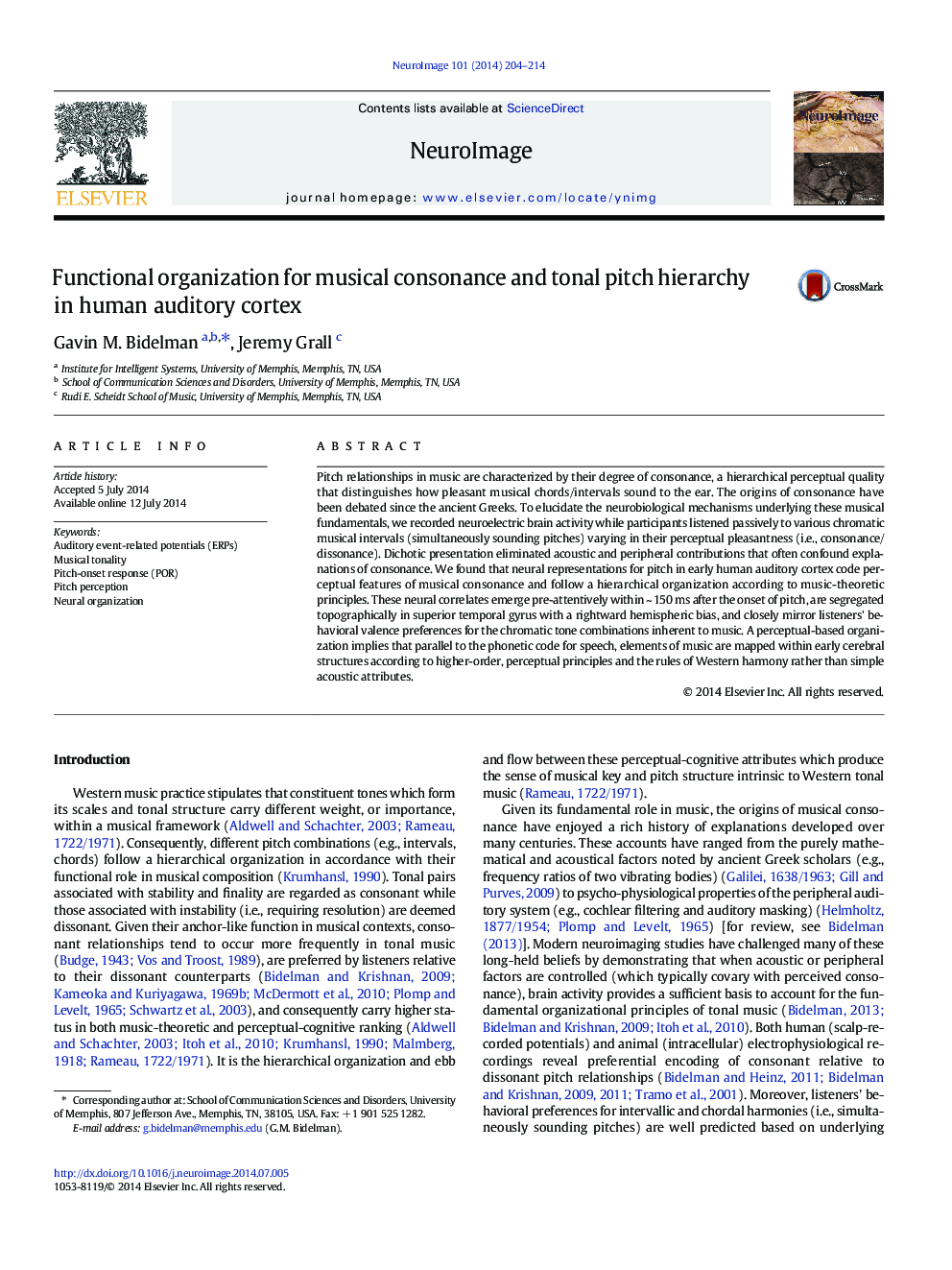| Article ID | Journal | Published Year | Pages | File Type |
|---|---|---|---|---|
| 6026283 | NeuroImage | 2014 | 11 Pages |
Abstract
Pitch relationships in music are characterized by their degree of consonance, a hierarchical perceptual quality that distinguishes how pleasant musical chords/intervals sound to the ear. The origins of consonance have been debated since the ancient Greeks. To elucidate the neurobiological mechanisms underlying these musical fundamentals, we recorded neuroelectric brain activity while participants listened passively to various chromatic musical intervals (simultaneously sounding pitches) varying in their perceptual pleasantness (i.e., consonance/dissonance). Dichotic presentation eliminated acoustic and peripheral contributions that often confound explanations of consonance. We found that neural representations for pitch in early human auditory cortex code perceptual features of musical consonance and follow a hierarchical organization according to music-theoretic principles. These neural correlates emerge pre-attentively within ~Â 150Â ms after the onset of pitch, are segregated topographically in superior temporal gyrus with a rightward hemispheric bias, and closely mirror listeners' behavioral valence preferences for the chromatic tone combinations inherent to music. A perceptual-based organization implies that parallel to the phonetic code for speech, elements of music are mapped within early cerebral structures according to higher-order, perceptual principles and the rules of Western harmony rather than simple acoustic attributes.
Related Topics
Life Sciences
Neuroscience
Cognitive Neuroscience
Authors
Gavin M. Bidelman, Jeremy Grall,
